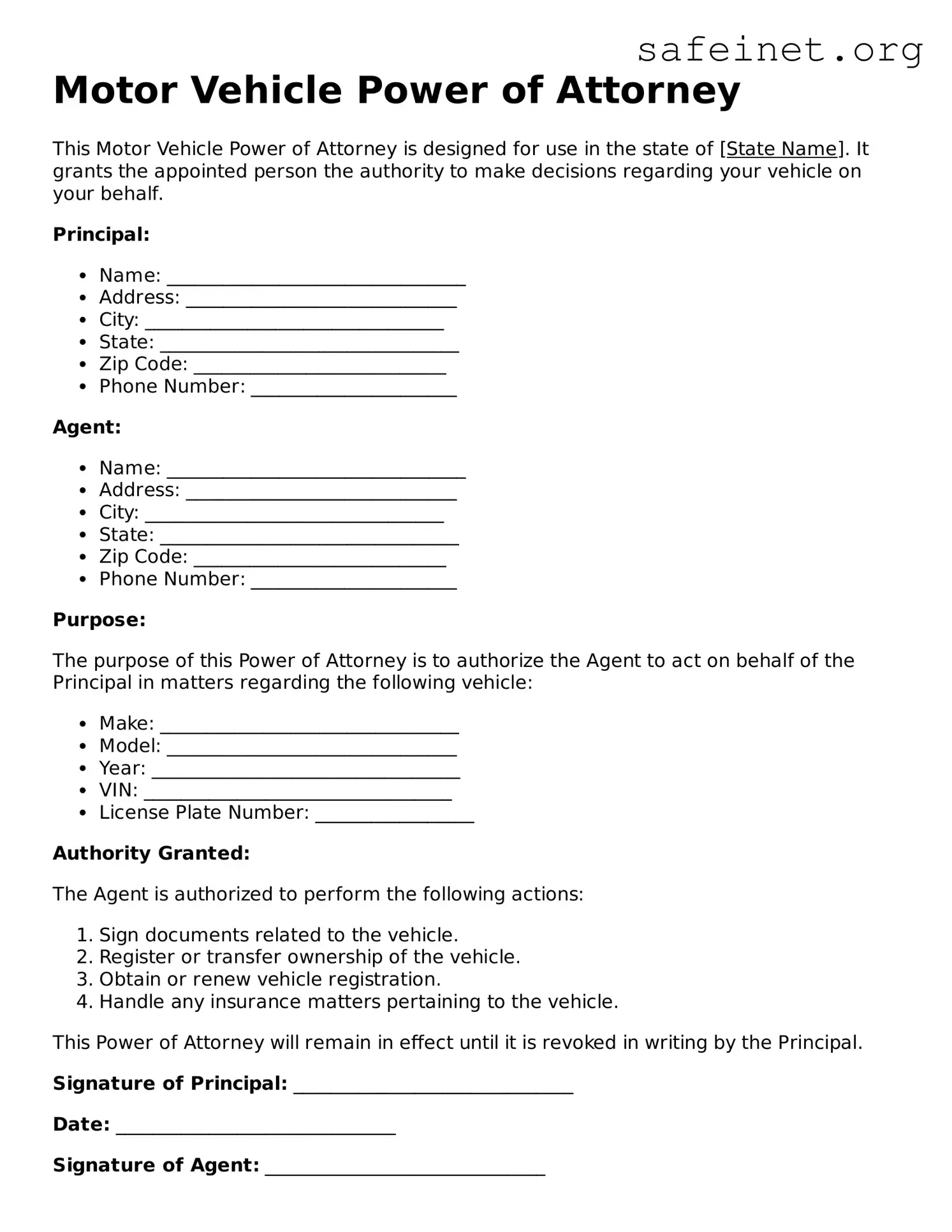What is a Motor Vehicle Power of Attorney form?
A Motor Vehicle Power of Attorney (MVPOA) form is a legal document that allows an individual, known as the principal, to designate another person, called the agent or attorney-in-fact, to handle specific tasks related to their motor vehicle. These tasks may include the ability to buy or sell a vehicle, register it, or transfer ownership. This document is particularly useful when the principal cannot be present to undertake these actions due to other commitments, health issues, or geographical constraints.
Why would someone need a Motor Vehicle Power of Attorney?
There are several scenarios where an MVPOA can be beneficial. For instance, if you plan to sell your car while you are out of town, granting someone else the authority to finalize the sale can facilitate the process. Similarly, if you are unable to visit the Department of Motor Vehicles (DMV) due to illness or other reasons, your agent can handle the necessary paperwork on your behalf. This flexibility can save time and reduce stress associated with vehicle transactions.
How do I create a Motor Vehicle Power of Attorney?
Creating an MVPOA typically involves downloading a form from your state’s DMV website or obtaining one from a legal professional. You will need to fill out the form with relevant details such as the names of the principal and the agent, the specific powers being granted, and the vehicle’s information. After completing the document, you generally need to sign it in the presence of a notary public. Be sure to check your state’s laws, as some may have unique requirements or conditions that must be met.
Can I revoke a Motor Vehicle Power of Attorney?
Yes, a Motor Vehicle Power of Attorney can be revoked at any time, as long as you are of sound mind. To revoke the MVPOA, you should create a written notice stating your intention to revoke the previous document. It is advisable to notify the agent immediately and, if possible, inform any institutions or parties that may have relied on the existing power of attorney. Additionally, destroying any copies of the original document can help prevent any confusion in the future.
Is a Motor Vehicle Power of Attorney valid in all states?
Generally, an MVPOA is recognized across many states in the U.S., but specific requirements and regulations may vary. Furthermore, a power of attorney that is valid in one state may not necessarily hold up in another. Therefore, it is crucial to familiarize yourself with your state’s laws regarding the creation and execution of a Motor Vehicle Power of Attorney. Consulting with a legal professional can provide clarity and ensure the document meets all necessary legal standards.
